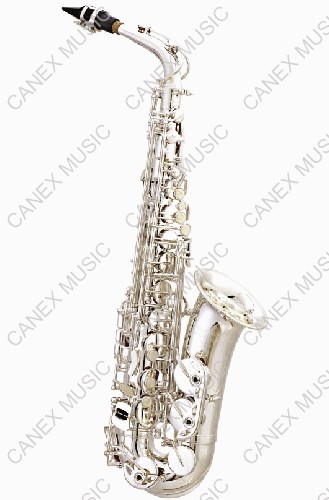 |
Saxophone
The saxophone (also referred to as the sax) is a conical-bore transposing musical instrument that is a member of the woodwind family. Saxophones are usually made of brass and played with a single-reed mouthpiece similar to that of the clarinet.While proving very popular in military band music, the saxophone is most commonly associated with popular music, big band music, blues, early rock and roll, ska and particularly jazz. There is also a substantial repertoire of concert music in the classical idiom for the members of the saxophone family. Saxophone players are called saxophonists.  |
|
.jpg) |
Flute
The flute is a musical instrument of the woodwind family. Unlike woodwind instruments with reeds, a flute is an aerophone or reedless wind instrument that produces its sound from the flow of air across an opening. According to the instrument classification of Hornbostel-Sachs, flutes are categorized as Edge-blown aerophones.Aside from the voice, flutes are the earliest known musical instruments. A number of flutes dating to about 40,000 to 35,000 years ago have been found in the Swabian Alb region of Germany. These flutes demonstrate that a developed musical tradition existed from the earliest period of modern human presence in Europe.  |
|
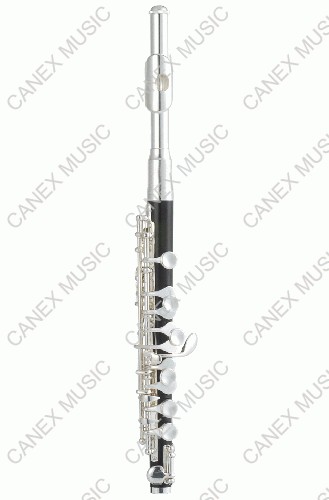 |
Piccolo
The piccolo (Italian for small) is a half-size flute, and a member of the woodwind family of musical instruments. The piccolo has the same fingerings as its larger sibling, the standard transverse flute, but the sound it produces is an octave higher than written. This gave rise to the name "ottavino," the name by which the instrument is referred to in the scores of Italian composers.
Piccolos are now only manufactured in the key of C; however, they were once also available in Db. It was for this Db piccolo that John Philip Sousa wrote the famous solo in the final repeat of the closing section (trio) of his march "The Stars and Stripes Forever".  |
|
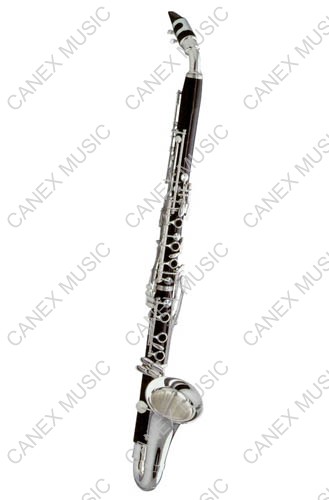 |
Clarinet
The clarinet is a musical instrument of woodwind type. The name derives from adding the suffix -et (meaning little) to the Italian word clarino (meaning a type of trumpet), as the first clarinets had a strident tone similar to that of a trumpet. The instrument has an approximately cylindrical bore, and uses a single reed. In jazz contexts, it has sometimes been informally referred to as the "licorice stick."Clarinets comprise a family of instruments of differing sizes and pitches. The clarinet family is the largest such woodwind family, with more than a dozen types, ranging from the BBb contrabass to the Ab soprano. Of these, many are rare or obsolete, and music written for them is usually played on the common types. The unmodified word clarinet usually refers to the Bb soprano clarinet, by far the most commonly played clarinet.  |
|
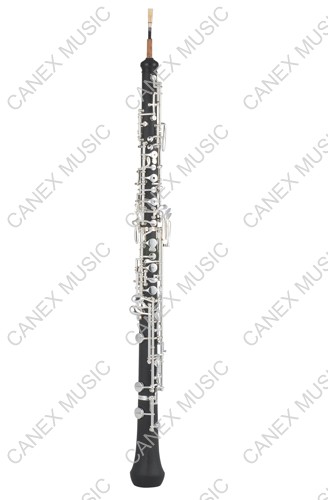 |
Oboe
The oboe is a double reed musical instrument of the woodwind family. In English, prior to 1770, the instrument was called "hautbois", "hoboy", or "French hoboy".The spelling "oboe" was adopted into English ca. 1770 from the Italian oboè, a transliteration in that language's orthography of the 17th-century pronunciation of the French word hautbois, a compound word made of haut ("high, loud") and bois ("wood, woodwind"). A musician who plays the oboe is called an oboist.  |
|
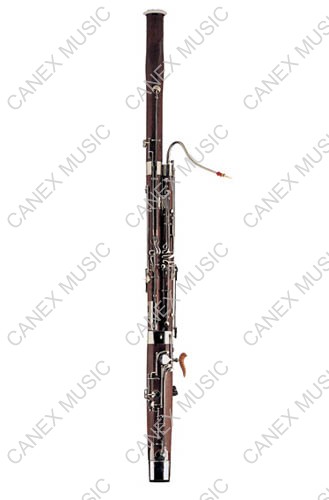 |
Bassoon
The bassoon is a woodwind instrument in the double reed family that typically plays music written in the bass and tenor registers, and occasionally higher. Appearing in its modern form in the 19th century, the bassoon figures prominently in orchestral, concert band, and chamber music literature. The bassoon is a non-transposing instrument known for its distinctive tone color, wide range, variety of character, and agility. Listeners often compare its warm, dark, reedy timbre to that of a male baritone voice.  |
|
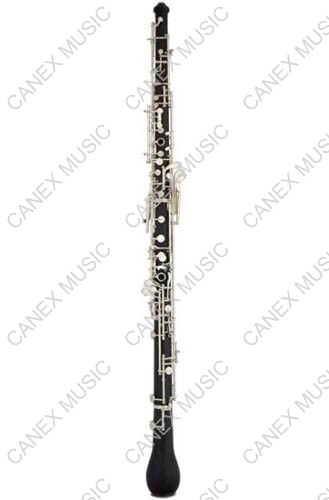 |
English horn
The English horn is the direct descendent of the oboe da caccia, which was used through out the Baroque period. There is some debate on the name English horn, because the instrument is neither English nor does it look anything like a horn.The English horn, or the oboe da caccia, was often used in Baroque music, but was not used very much from Haydn's time to Wagner's era.  |
|
|

.jpg)





